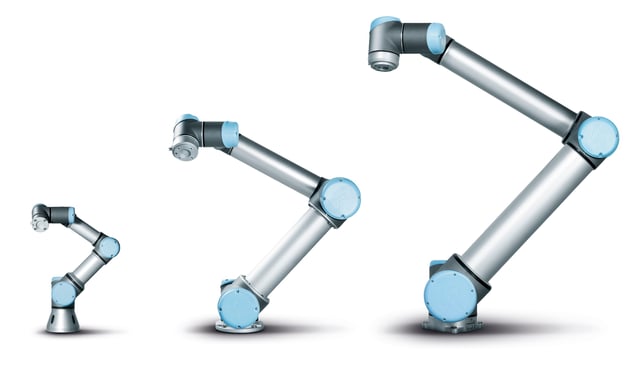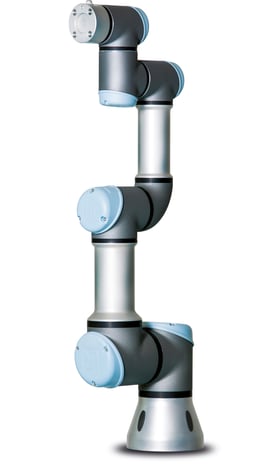-
- bimba
- Universal Robots
- dorner
- cobots
- industrial automation nj/ny
- The Knotts Company
- manufacturing
- Dorner Conveyors,
- The Knotts Co
- UR
- Robots
- PLC
- Unitronics
- automation
- humphrey products
- knotts company
- solutions
- HMI
- automation solutions
- cobot
- conveyors
- robotics
- aluminum extrusion
- aluminum extrusion in nj
- engineered solutions
- Robotiq
- air cylinder
- collaborative robots
- cost effective
- cost savings
- t-slotted extrusion
- bimba solutions
- collaborative robot
- technology
- MiR
- Humphrey
- IAI
- WAGO
- assembly
- bimba pneumatic
- machine guard
- smartflex conveyors
- solution
- 2200 Series
- cylinder
- electric cylinder
- motion control
- packaging
- pharmaceuticals
- sanitary conveyor
- Products
- automated palletizing
- automation control
- conveyor
- core competencies
- grippers
- palletizing
- resource
- robot
- AquaPruf
- Asycube
- Asyril
- Belt Conveyors
- Cage Clamp
- Food
- Machine Guarding
- Mobile Robots
- Norgren
- OptoForce
- Pneumadyne
- Pneumatic Valve
- ROBO Cylinder
- UR5
- actuators
- compressed air
- custom solution
- food safety and sanitation
- mobile industrial robot
- quality assurance
- robotics solutions
- safety
- stainless steel conveyors
- vision
- Belts
- Benefits
- Beverage
- Bimba IntelliSense®
- CT Effects
- PLC+HMI
- Proportion Air
- Proportional valve
- Questions
- Success
- UR10
- Vaccon
- automated inspection
- gripper
- improvement
- industrial vision
- intelligent actuator
- labeling application
- labor shortage
- life science
- medical
- medical industry
- pneumatic motion control
- sales process
- sensor
- thomas
- valve
- 3200 series
- 6-axis robot
- 80/20
- Acro
- Automate
- LMI
- Machine
- OnRobot
- Original Line Cylinder
- Pinch Valve
- Precision Technology
- Predictive Maintenance
- Preventive Maintenance
- Product News
- ROBO Cylinders
- ROI
- Reducing Costs
- automated mobile robot
- autonomous mobile robot
- connectors
- controls
- covid
- custom solutions
- customer service
- e-Series
- electric actuator
- electro-mechanical
- end of arm tools
- energy plant
- ethercat
- external resource
- flexmove technology
- guarding
- inspection
- machine control
- manufacturers
- monitoring
- motion
- new product
- outsource
- outsourcing
- packing
- pneumatic actuator
- pneumatic valves
- precision move
- quick response solution
- regulator
- sales tools
- steel frame
- vacuum
- vacuum technology
- welded steel frame
- 7X Series Conveyor
- AMR
- Advantages
- Application
- Applied Motion Products
- Asycube 530
- Asyfeed Pocket
- Balanced Valves
- CNC program
- Continuity Inspection Tool
- Control Panel
- Controllers
- Crowned Pulley
- F22 Series
- Factory Improved Productivity
- Filtration
- Fire Fighting
- Flexible Feed
- Freeze protection
- Gas
- High Pressure Regulator
- IP65
- Inspekto
- IntelliPress
- Intellisense
- International Manufacturing Technology Show 2016
- LARGO A5
- Legos
- MIRAI
- Machine Controllers
- Machine Vision
- Micropsi
- NJ
- NY
- New
- New Scale Robotics
- OEE
- Oil
- Optimization
- PACK EXPO
- PC10
- Parison Blow Molding
- Pick-it
- ProControl Series
- ROEQ
- Rain Test
- Resin Block
- Rio Olympics
- SCHUNK
- Sanitation
- Sensors
- Smart Manufacturing
- Spot Welding
- TRD
- Temperature Controller
- Training
- Trio Manufacturing Technology
- Twist Clamp
- UR3
- UniStream
- Universal
- V-guide
- Valve Assemble
- Vane-Buster
- Versagrip
- Versagrip solenoid pinch valves
- Victory Actuator
- Vision430
- XTR Series
- Yamaha
- balanced solenoid valve series
- bimba electric
- bottle filling
- brewery
- brushless motor
- buna
- center point
- chicane
- cloud
- cobot compliance
- collaborative operation
- compact series
- composite cylinder
- conference
- cost
- date code
- demonstration
- desiccant drier
Get the latest in your inbox.
This post is brought to you by Universal Robots.
For small and mid-sized manufacturers who are exploring robotics, the decision on 3-axis or 6-axis movement typically comes down to processing requirements and price. For simple pick-and-place requirements such as inserting and removing parts from a mold, a 3-axis robot may be all you need. But a robot is a long-term investment that should meet your requirements today and for years to come. The simple process that you’re considering automating now can easily become more complex over time. You may also find that your initial foray into robotics inspires many new applications for automation, and those may require more sophisticated movement. Fortunately, the decision doesn’t have to be complicated if you can get the advantages of a flexible, long-life 6-axis robot for the price of a 3-axis robot.

A 3-axis robot follows a standard X-Y-Z definition of three-dimensional space. These robots can reach forward and back, from side to side, and up and down. In contrast, a 6-axis robot has an articulated arm that allows for movement that is more similar to that of a human arm. It can rotate, bend, and move in an arc. That maneuverability means these 6-axis robots can grip objects at different angles and can rotate or tilt parts, making them ideal for more sophisticated pick-and-place applications. It typically also makes them more expensive. But every robot arm from Universal Robots offers the cost advantages of a 3-axis robot with the flexibility and maneuverability of a 6-axis robot.
 For UR customer Oticon, the world’s second-largest hearing aid manufacturer, that was critical. As hearing aid components became increasingly smaller, Oticon’s older 2- and 3-axis robots were no longer up to the task. For instance, if a small part got stuck in the mold, the robotic arm couldn’t perform the required lateral and vertical movements to tip it out. Oticon installed new, 6-axis UR robot arms, which can easily rotate or tilt parts to lift them quickly out of the mold. The robot’s flexible deployment was also important. Arne Oddershede, group leader of the maintenance unit at Oticon, explains, “Since we produce different batch sizes and components when developing new products, it must be possible to easily reprogram the robot. With a traditional robot, this involves a computer and requires specially-trained staff. But with the UR5, any member of the technical staff can literally grab the robot and show it the motion sequence using waypoints.”
For UR customer Oticon, the world’s second-largest hearing aid manufacturer, that was critical. As hearing aid components became increasingly smaller, Oticon’s older 2- and 3-axis robots were no longer up to the task. For instance, if a small part got stuck in the mold, the robotic arm couldn’t perform the required lateral and vertical movements to tip it out. Oticon installed new, 6-axis UR robot arms, which can easily rotate or tilt parts to lift them quickly out of the mold. The robot’s flexible deployment was also important. Arne Oddershede, group leader of the maintenance unit at Oticon, explains, “Since we produce different batch sizes and components when developing new products, it must be possible to easily reprogram the robot. With a traditional robot, this involves a computer and requires specially-trained staff. But with the UR5, any member of the technical staff can literally grab the robot and show it the motion sequence using waypoints.”
Contract manufacturer Dynamic Group found similar advantages. Here, the maneuverable collaborative robot arms from Universal Robots are used in three different applications. Two tend injection-molding machines while the third robot is deployed in a kitting application. First, the UR10 robot picks up the bottom of a custom-made clamshell and then uses a vacuum gripper to pick up two sterile wipes along with some saline solution, placing these into the clamshell. Once items have been placed, the UR10 pushes the full clamshell onto a conveyor and repeats the cycle. These sophisticated motions couldn’t be done with a typical 3-axis robot. Joe McGillivray, Dynamic Group co-owner, originally didn’t think his company could afford collaborative automation. “When I started looking, I assumed I was talking hundreds of thousands of dollars per installation. I was surprised to find that we could afford a six-axis robot and a collaborative one at that.”
McGillivray adds, “I also assumed that I would need a very expensive engineer to help me get these worked out. I’m not an engineer and within an hour of delivery, I had them set up and running basic programs.” The robots have provided improved product consistency and a 400% increase in production capacity, leading McGillivray to estimate the return on investment on the initial system to be less than two months.
If you think you can’t afford the flexibility and maneuverability of a 6-axis robot, now is the time to explore your options here.
Interested in a 6-Axis Robot?
Interested in Learning More?
Please fill out our contact form, and a member of the Knotts Team will get in touch to help you.
%202.png?width=323&height=215&name=PH_VA_VR_Series_Technical_Support%20(1)%202.png)



